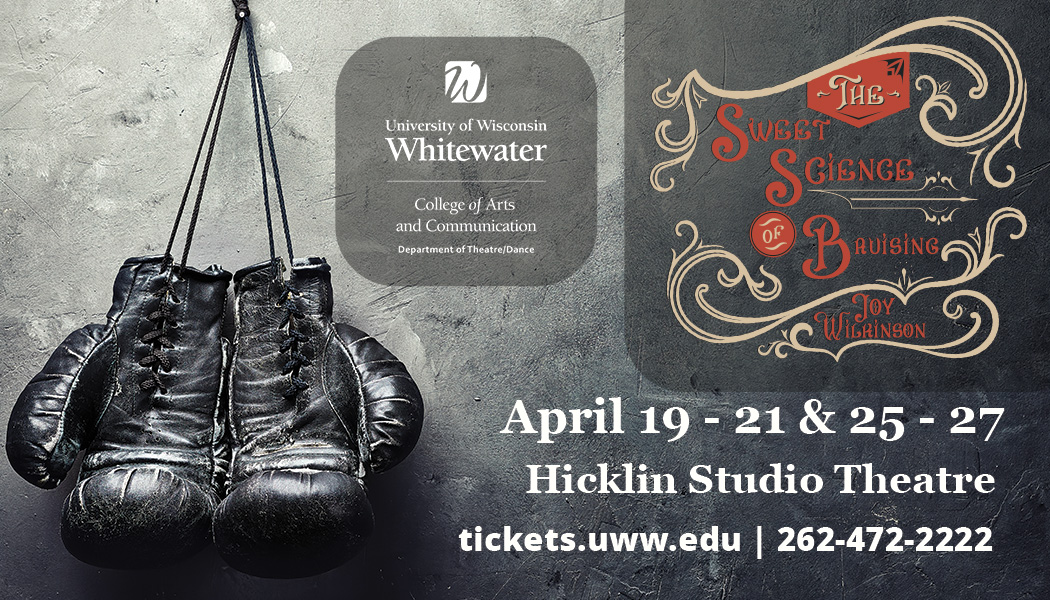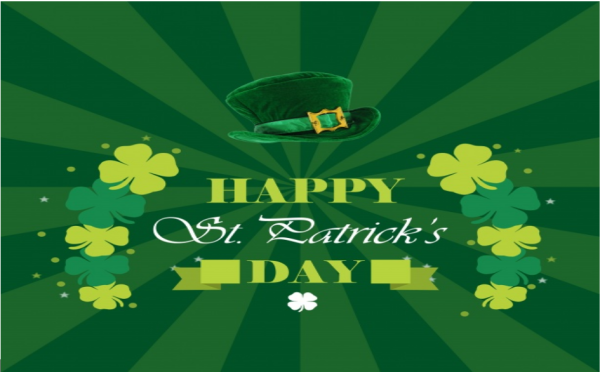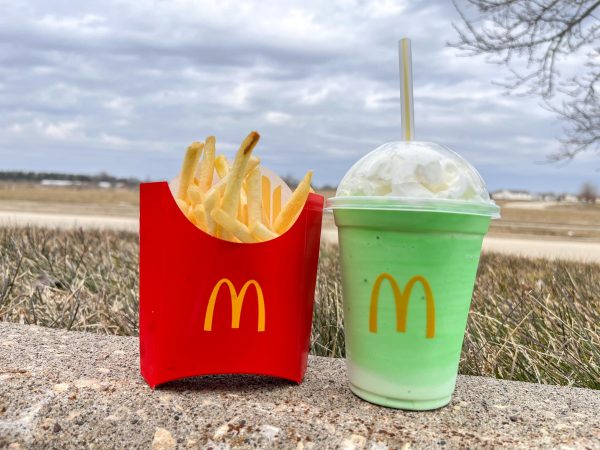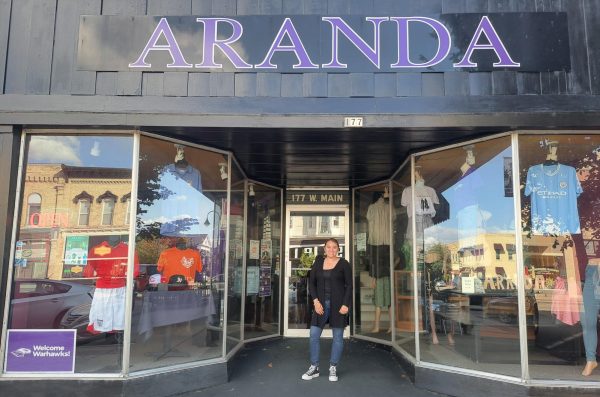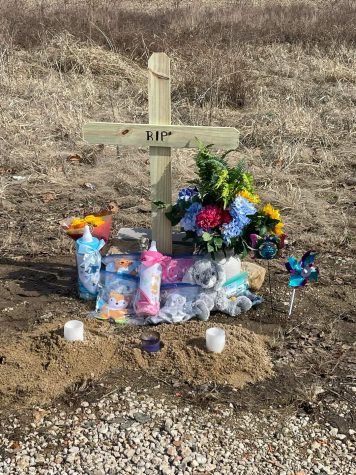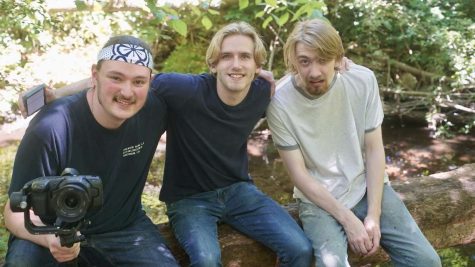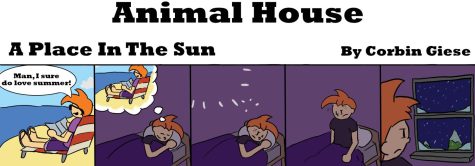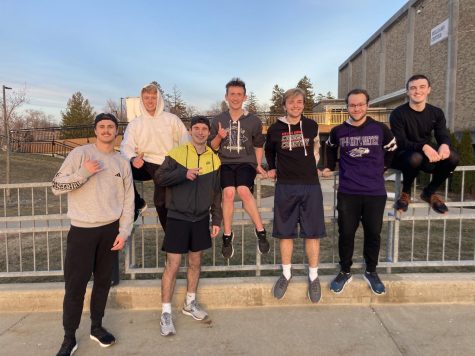Stepping into the past
UW-W staff tour campus history

Sustainability Office Director Wes Enterline shows an intrigued staff some historical photos of The Hamilton Green, an old five-acre garden used by the university when it was originally a normal school that instructed teachers.
August 29, 2021
The University of Wisconsin-Whitewater has an extensive history that expands nearly one and a half centuries. This history is rich with a background in botany and sustainability projects that makes UW-W’s campus known for its green thumb. This is something the university loves to share with the community through various types of tours throughout the summer, fall and spring.
Tuesday, Aug. 24, the Sustainability Office held a campus landscape and history tour for Whitewater employees. Leading this tour was Director Wes Enterline, who knows a thing or two about the history and landscape of the university. Being an alumnus and staff member for many years has helped him gain a vast knowledge of the history of UW-W’s campus landscape along with its many flora and fauna.

“Between my time as a student and now my time as a staff member, I’ve had nearly twenty years in total, pretty much my whole adult life has been associated with the university,” said Enterline. “I know a lot from what I experienced as a student and now working at the facilities, I know even more about the buildings and grounds. I have seen projects evolve over time, so I have kind of seen changes over the last couple of decades.”
While on this tour the Whitewater staff got to enjoy a brief history of the Minneiska Springs water feature, located by the North Mall, along with getting their questions answered on the types of flowers and plants featured in the spring. Although Enterline may not know the names of all 1,700 trees and a variety of plants located on campus, he did his absolute best to answer the question, “What is that?” many times over.
Next, the staff got to learn about the formation of the landscape due to glaciers. This explained why many of the buildings located on campus are named after types of glaciers, examples being Drumlin and Esker hall. The landscape was not the only interesting thing to learn on this tour, however, as Enterline went into great detail about the university’s historical figures such as Frank Hyer, Albert Salisbury and Joseph Chopp. For some in the group, what they were most excited about was the history of the university’s buildings such as The Red School House and The Log Cabin, two of UW-Whitewater’s oldest buildings on campus.
“This is something I have never done before, so I have always been interested in going. I used to sell real estate, so buildings are always something I have really been interested in-historical buildings particularly,” said university executive staff assistant Hermie Snorek, who has been employed with Whitewater for 14 years.
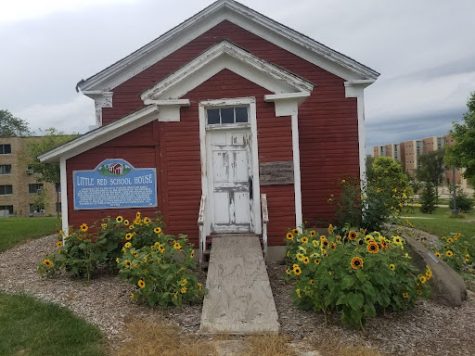
One of the most fascinating buildings to learn about for attendees was the history of Old Main. This was the original building that stood on campus grounds from 1868 to 1970. Mr. Enterline went into great detail about the interior and exterior of the building using dozens of photos taken back in the 18th and 1900s. The building went through quite a bit, such as two fires, one involving arson caused by anti-war protests. After Old Main’s deconstruction, the university made a memorial to the building by constructing the Alumni center, located between the Chopp Arboretum and Salisbury Arboretum. The end of the tour led the group inside the Whitewater University Center to explore Old Main Lane, a long stretch of hallway with interactive displays along with some very old artifacts from the university’s history. Some artifacts to be found are a pipe that was once inside in a time capsule and a bustled black dress from the late 1800s. This tour left the staff satisfied with their newfound knowledge about the campus and its history.
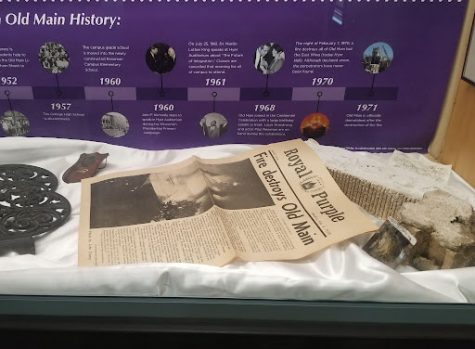
“I was really looking forward to this tour since it was posted on the welcome back website. I love the history piece of it,” said educational pathways coordinator Stacie Collins. “The best part for me was learning about Old Main because I wasn’t aware of all the history involved, and so that was my favorite part of the whole tour.”
For more information about how to get on one of these tours yourself visit https://www.uww.edu/ce/gardenlandscape/gradenlandscapetours.










